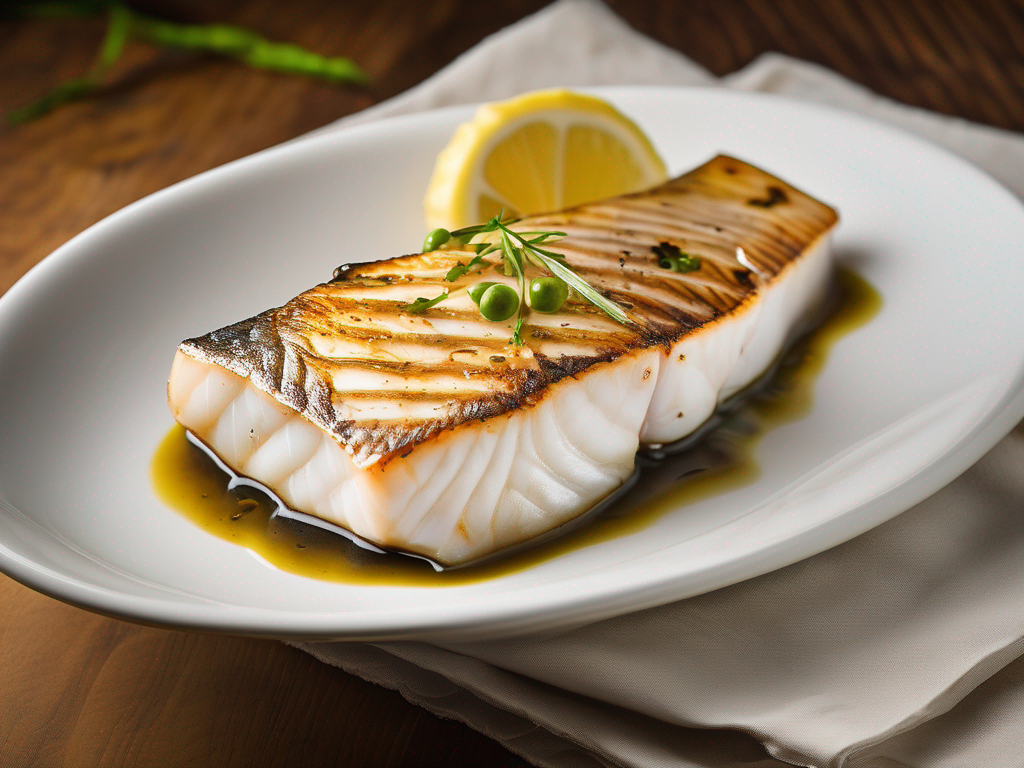
The Best Way to Reheat Leftover Halibut Fresh Cooked Without It Drying Out
Get Your Free Food Safety Cheat Sheet
30 most common foods with instant answers. Print it and stick it on your fridge—completely free!
The Best Way to Reheat Leftover Halibut Fresh Cooked Without It Drying Out
Are you wondering how to reheat your leftover halibut without it turning dry and unappetizing? Halibut is a delicate and delicious fish that can easily dry out if not reheated properly. In this guide, we will explore the best methods to reheat your leftover halibut while ensuring it stays moist and flavorful. (Halibut fresh cooked)
Understanding Halibut Fresh Cooked
Before we dive into the reheating methods, let's take a closer look at halibut and why it tends to dry out when reheated. Halibut is a lean fish with a mild, sweet flavor and a firm texture. When cooked, halibut can easily become dry and lose its moisture, especially when reheated at high temperatures or for extended periods.
Halibut is best enjoyed fresh, but if you have leftovers that need reheating, there are ways to preserve its moisture and flavor.
Why Does Halibut Dry Out When Reheated?
Halibut, like many lean fish varieties, contains less fat than oily fish. This lower fat content makes halibut more prone to drying out during the cooking and reheating process. When exposed to high heat or prolonged cooking times, the moisture in the fish evaporates, leading to a dry and tough texture.
To prevent your leftover halibut from drying out during reheating, it's essential to use gentle methods that help retain moisture and preserve the fish's delicate texture.
Best Methods to Reheat Halibut Fresh Cooked
1. Using the Oven
- Preheat your oven to a low temperature, around 275°F.
- Place the halibut in an oven-safe dish and cover it with foil to trap moisture.
- Heat the halibut in the oven for about 10-15 minutes or until warmed through.
- Check the internal temperature with a food thermometer to ensure it reaches at least 145°F for food safety.
2. Steaming
- Bring a pot of water to a simmer and place a steamer basket over the water.
- Place the halibut in the steamer basket and cover with a lid.
- Steam the halibut for 5-7 minutes or until heated evenly.
- Avoid overcooking to prevent dryness.
3. Microwaving
- Place the halibut on a microwave-safe plate and cover it with a damp paper towel.
- Microwave on medium power in short intervals, checking and flipping the fish in between.
- Stop microwaving once the halibut is heated through but still moist.
4. Sous Vide
- If you have a sous vide machine, this method is excellent for reheating delicate fish like halibut.
- Vacuum-seal the halibut in a bag and place it in the sous vide water bath at a low temperature (around 120°F) for a short time.
- This gentle method ensures the fish reheats evenly without losing moisture.
5. Sautéing with Butter or Olive Oil
- Heat a skillet over medium heat and add a small amount of butter or olive oil.
- Place the halibut in the skillet and heat for a few minutes on each side.
- The added fat helps retain moisture and enhances the flavor of the fish.
Tips for Keeping Reheated Halibut Moist
- Add a splash of broth or lemon juice to the halibut before reheating to infuse moisture and flavor.
- Avoid overheating the halibut, as this can lead to dryness and toughness.
- Store leftover halibut properly in an airtight container in the refrigerator to maintain freshness.
Conclusion
Reheating leftover halibut fresh cooked doesn't have to result in a dry and unappetizing meal. By using gentle reheating methods such as the oven, steaming, microwaving, sous vide, or sautéing with butter or olive oil, you can preserve the moisture and flavor of the halibut. Remember to handle and store the fish properly to ensure food safety and quality. Enjoy your reheated halibut without worrying about it drying out!
For more information on [halibut fresh cooked](/food/halibut fresh cooked) and other cooking tips, visit our website. (Halibut fresh cooked)
Authoritative Food Safety References
These agencies and university labs inform every tip and health precaution we publish.
USDA FoodKeeper – Cold Storage Guidelines
Official refrigerator, freezer, and pantry timelines maintained by the U.S. Department of Agriculture.
Visit USDA FoodKeeperFDA Produce Safety Rule & Grower Guidance
Field-to-fridge handling practices that prevent contamination of fruits, vegetables, and leafy greens.
Visit FDA Produce SafetyCDC Foodborne Illness Prevention Hub
Surveillance-backed guidance on pathogens, symptoms, and steps to reduce foodborne illness risk.
Visit CDC Food SafetyUC Davis Postharvest Technology Center
University research detailing optimal storage atmospheres for produce after harvest.
Visit UC Davis PostharvestPenn State Extension – Home Food Preservation & Safety
Peer-reviewed extension bulletins on safe canning, chilling, and reheating practices.
Visit Penn State ExtensionGet Your Free Food Safety Cheat Sheet
30 most common foods with instant answers. Print it and stick it on your fridge—completely free! Want more? Upgrade to the complete guide with 70+ foods.
Scan your food directly and get instant safety info using our AI-powered camera feature.